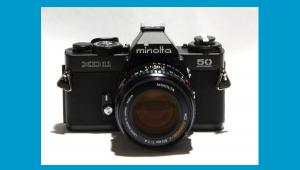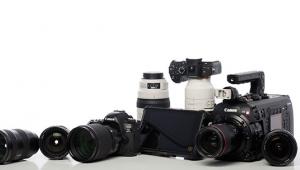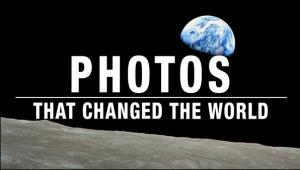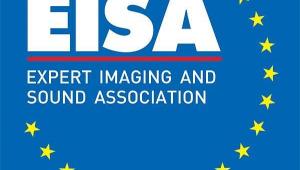Samsung NX100 Test
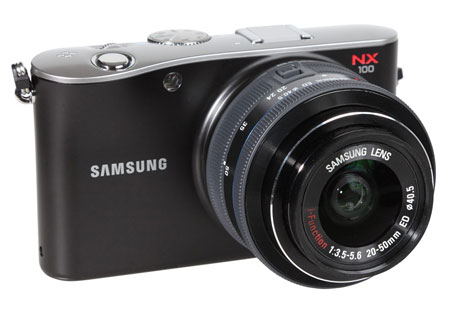
|
The NX100 is Samsung’s smallest and most compact CSC-camera. Unlike the NX5 and the NX5 it looks like a standard compact camera, not like an SLR system. The camera offers 14 MP resolution, a 20-50 mm kit lens with Samsung’s new “i-function” technology, a large and brilliant AMOLED LCD on the back and a robust body.
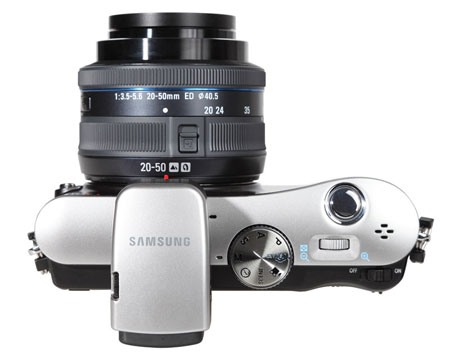
|
The camera offers a large mode dial on top to choose standard exposure modes, video mode or scene modes (scene programs are available via LCD menu). It uses two parameter dials to change aperture, shutter speed and other function settings quickly and easily.
The camera doesn’t come with an internal flash system and depends on an accessory flash system. The GPS-tracker it is able to pinpoint the location where images are taken and is able to geotag the images with additional location information recorded in the EXIF data.
The NX100 is Samsung’s first camera with an “ i-function” lens system. The kit lens offers a function button that can be used to set ISO, white balance, EV-compensation and other functions on the LCD screen. The photographer can change values with the lens ring. It’s a very comfortable and reliable system, also available for NX5 and NX10 when these cameras are equipped with the newest firmware.
The camera offers two dials for fast setup of all parameters: Using the dial right behind the shutter release button and the second dial, a ring around the 4-way cursor field, the user can set aperture and shutter speed simultaneously. The large mode dial on the top allows the user to toogle between many exposure modes or to switch into video recording mode. The camera is able to take videos with HD resolution (1280 x 720 pixels) and records the clips as QuickTime movies with MP4 compression.
 |
Samsung offers an optional electronic viewfinder for the NX100. The ED-EVF10 is mounted on the accessory shoe and uses an additional digital interface on the back of the camera. Samsung offers an additional GPS tracker and flash systems as further accessories. Note the i-function button on the lens.
Image Quality
 |
The Samsung NX100 test of the standard testbox was shot in P mode. The automatic white balance system created realistic looking colors with a very light yellow shift in the brighter areas. The red colors of the spool and the red “Kodak Color Control Patch” is very highly saturated. The blue spool shows a high magenta rate.
Color:
The Samsung NX100 offers realistic looking colors with an average over saturation of 8 percent (108,4 percent saturation) which is an average saturation result for entry level SLR cameras. The color errors are on a very low level, only some blue nuances are overemphasized with a high magenta rate and in some images the yellow rate in red elements is also very high.
The camera offers natural looking skintones with only minor aberrations. The test portrait shot shows a little color shift in some skin regions beneath the chin into the more yellowish and greenish color area while some bright areas show the standard shift into the more magenta area. Some red colors are also boosted due to a higher yellow and orange rate.
 |
The Samsung NX100 offers natural looking skintones and shows a lot of image details, which aren’t overemphasized by electronic sharpness filtering. The red color of the model’s t-shirt is oversaturated and therefore shows a lower differentiation of red nuances than other digital SLRs.
Sharpness:
The camera performed well in sharpness tests. The camera reproduced an ISO12233 chart with 2638 lines per picture height, which is a very good result for a camera with a nominal resolution of 3056 pixels per picture height. Combined with the 20-50mm kit lens the camera showed only minor chromatic aberrations in the image center and some aberrations in the image corners.
Both test images show a lot of details in all image elements. The hair structure in the test portrait shot has a realistic look because the Samsung NX100 uses quite good electronic sharpening. The “overshoot/undershoot” results are on the same level as in images taken with entry level SLR systems.
Noise:
“Color clouds” in the gray scale chart start to become visible in images taken with ISO speed 800 or higher. The red line in the “pixel noise” test starts to differ from the green, blue and luminance noise graph in images taken with ISO 800 or higher.
Luminance noise results are on an average level. The camera showed the Stouffer-4110-chart with a luminance noise level of 0.58 in ISO 100 setting and kept the y-factor under 1,0 up to ISO 400. The “noise spectrum” is a little higher than in images taken with other digital cameras with an APS-C sensor. Nevertheless, photographers can expect nice and clean results in speed settings up to ISO 400 and good results in images taken with ISO 800 to 3200.
Pro:
+compact body, classic camera design, high quality finish easy handling, especially with i-function lens system high quality AMOLED LCD screen with high resolution (614000 RGB-dots)
Con:
EVF only as optional accessory only one accessory module usable at the same time
This report is an edited version of the Betternet test report supplied to Shutterbug as part of its association with the worldwide TIPA organization. Shutterbug is the sole US representative of TIPA, the Technical Image Press Association.



